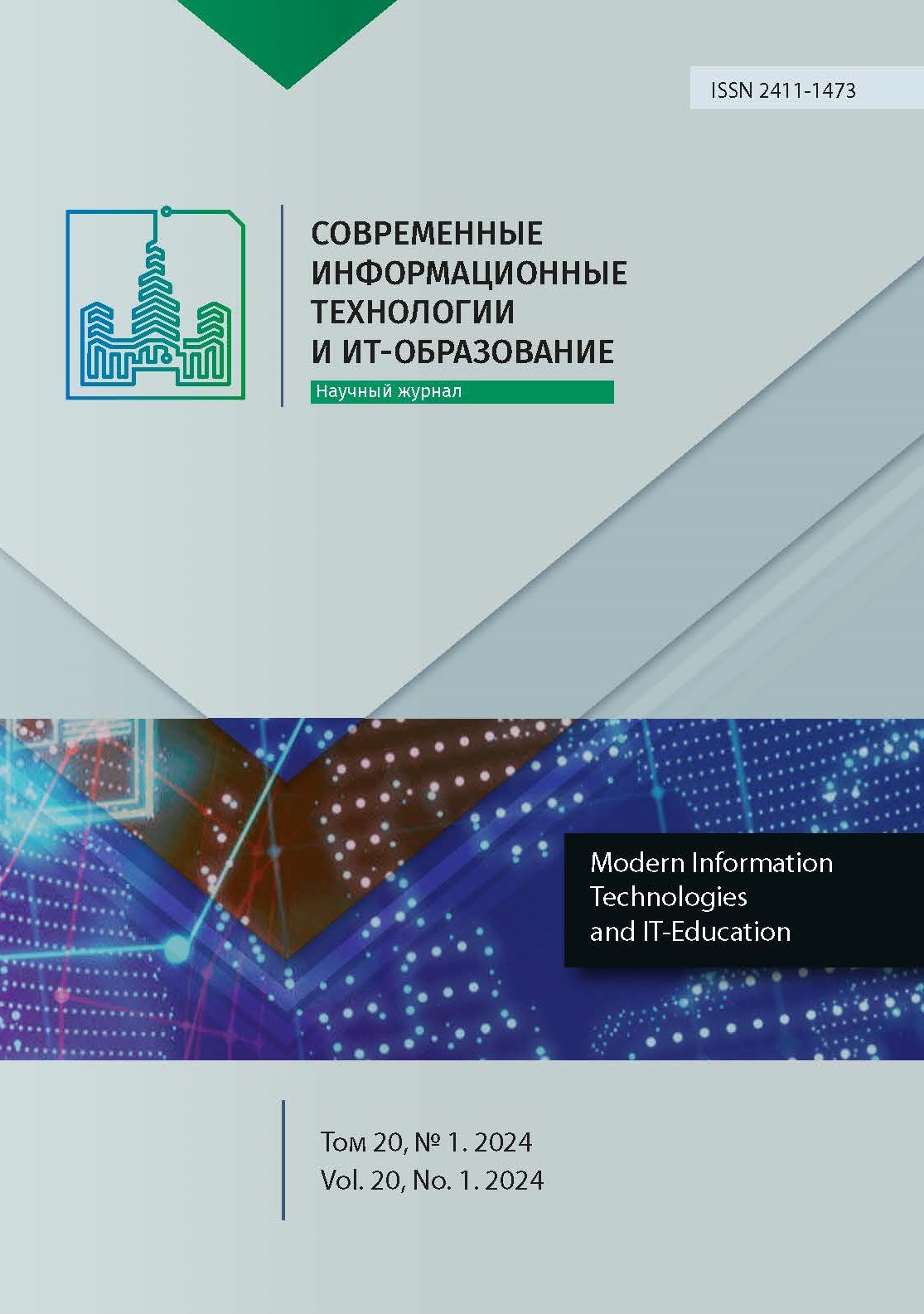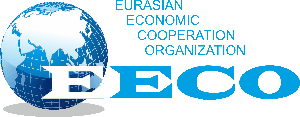Эффективное построение переупорядочиваний множества операций с памятью в многопоточной программе
Аннотация
Данная работа посвящена различным методам построения всевозможных линейных порядков для частично упорядоченных множеств. Сложность задачи заключается в том, что даже для множества небольшого размера, построение и проверка на какой-либо признак его всевозможных линейных порядков может приводить к необходимости перебора огромного количества вариантов. Частным случаем этой общей задачи является построение всевозможных переупорядочений для операций с памятью в многопоточных программах с учётом модели памяти. Цель этой работы — это сокращение пространства перебора в этом случае. В качестве важного практического примера рассматриваются модели памяти, позволяющие буферизацию загрузок. При этом оказывается возможным установить классы эквивалентности над перестановками операций. Это в свою очередь имеет большое значение для верификации памяти в многопоточных системах. На сегодняшний день для такого рода верификации применяются литмус-тесты, которые имеют свои ограничения. В данной работе предложен алгоритм, который учитывает классы эквивалентности при переупорядочиваниях операций с памятью, что позволяет существенно сократить как количество необходимых перестановок, так и время, затраченное на их перебор. Результаты исследования позволяют эффективно обобщить концепцию литмус-тестов на произвольные частично упорядоченные множества и существенно расширить их применимость.
Литература
2. Banks J., et al. Using TPA to count linear extensions. Journal of Discrete Algorithms. 2018;51:1-11. https://doi.org/10.1016/j.jda.2018.04.001
3. Bennett A.J., Field T., Harrison P. Modelling and validation of shared memory coherency protocols. Performance Evaluation. 1996;27-28:541-563. https://doi.org/10.1016/S0166-5316(96)90045-0
4. Petrot F., Greiner A., Gomez P. On Cache Coherency and Memory Consistency Issues in NoC Based Shared Memory Multiprocessor SoC Architectures. In: 9th EUROMICRO Conference on Digital System Design (DSD'06). Cavtat, Croatia: IEEE Press; 2006. p. 53-60. https://doi.org/10.1109/DSD.2006.73
5. Borrmann L., Istavrinos P. Store coherency in a parallel distributed-memory machine. In: Bode A. (ed.) Distributed Memory Computing. EDMCC 1991. Lecture Notes in Computer Science. Vol. 487. Berlin, Heidelberg: Springer; 1991. p. 32-41. https://doi.org/10.1007/BFb0032920
6. Acquaviva J.-T., Jalby W. Experimental analysis of coherency behavior of shared memory scientific applications. In: Proceedings 8th International Symposium on Modeling, Analysis and Simulation of Computer and Telecommunication Systems (Cat. No.PR00728). San Francisco, CA, USA: IEEE Press; 2000. p. 142-151. https://doi.org/10.1109/MASCOT.2000.876439
7. Szőllősi Á., et al. Litmus test of rich episodic representations: Context-induced false recognition. Cognition. 2023;230:105287. https://doi.org/10.1016/j.cognition.2022.105287
8. Pautet L., Robert T., Tardieu S. Litmus-RT plugins for global static scheduling of mixed criticality systems. Journal of Systems Architecture. 2021;118:102221. https://doi.org/10.1016/j.sysarc.2021.102221
9. Brightwell G., Winkler P. Counting linear extensions is #P-complete. In: Proceedings of the twenty-third annual ACM symposium on Theory of Computing (STOC '91). New York, NY, USA: Association for Computing Machinery; 1991. p. 175-181. https://doi.org/10.1145/103418.103441
10. Farley J.D. Linear extensions of ranked posets, enumerated by descents. A problem of Stanley from the 1981 Banff Conference on Ordered Sets. Advances in Applied Mathematics. 2005;34(2):295-312. https://doi.org/10.1016/j.aam.2004.05.007
11. De Loof K., De Baets B., De Meyer H. On the random generation and counting of weak order extensions of a poset with given class cardinalities. Information Sciences. 2007;177(1):220-230. https://doi.org/10.1016/j.ins.2006.04.003
12. Knuth D. Permutations, matrices, and generalized Young tableaux. Pacific journal of mathematics. 1970;34(3):709-727. https://doi.org/10.2140/pjm.1970.34.709
13. Haiman M.D. Dual equivalence with applications, including a conjecture of Proctor. Discrete Mathematics. 1992;99(1-3):79-113. https://doi.org/10.1016/0012-365x(92)90368-p
14. Robinson G. de B. On the representations of the symmetric group. American Journal of Mathematics. 1938;745-760. https://doi.org/10.2307/2371609
15. Dittmer S., Pak I. Counting Linear Extensions of Restricted Posets. The Electronic Journal of Combinatorics. 2020;27(4):4.48. https://doi.org/10.37236/8552
16. Fava D.S., Steffen M., Stolz V. Operational semantics of a weak memory model with channel synchronization. Journal of Logical and Algebraic Methods in Programming. 2019;103:1-30. https://doi.org/10.1016/j.jlamp.2018.10.004
17. Dan A., et al. Effective abstractions for verification under relaxed memory models. Computer Languages, Systems & Structures. 2017;47:62-76. https://doi.org/10.1016/j.cl.2016.02.003
18. Marvik O.A. A method for IC layout verification. In: Proceedings of the 21st Design Automation Conference (DAC '84). Albuquerque, NM, USA: IEEE Press; 1984. p. 708-709. https://doi.org/10.1109/dac.1984.1585890
19. Winter K., Smith G., Derrick J. Modelling concurrent objects running on the TSO and ARMv8 memory models. Science of Computer Programming. 2019;184:102308. https://doi.org/10.1016/j.scico.2019.102308
20. Cohen E., Schirmer B. From Total Store Order to Sequential Consistency: A Practical Reduction Theorem. In: Kaufmann M., Paulson L.C. (eds.) Interactive Theorem Proving. ITP 2010. Lecture Notes in Computer Science. Vol. 6172. Berlin, Heidelberg: Springer; 2010. p. 403-418. https://doi.org/10.1007/978-3-642-14052-5_28
21. Mador-Haim S., Alur R., Martin M.M.K. Litmus tests for comparing memory consistency models: how long do they need to be? In: Proceedings of the 48th Design Automation Conference (DAC '11). New York, NY, USA: Association for Computing Machinery; 2011. p. 504-509. https://doi.org/10.1145/2024724.2024842
22. Jiménez E., Fernández A., Cholvi V. A parametrized algorithm that implements sequential, causal, and cache memory consistencies. Journal of Systems and Software. 2008;81(1):120-131. https://doi.org/10.1016/j.jss.2007.03.012
23. Wrenger L., Töllner D., Lohmann D. Analyzing the memory ordering models of the Apple M1. Journal of Systems Architecture. 2024;149:103102. https://doi.org/10.1016/j.sysarc.2024.103102
24. Tabbakh A., Annavaram M. An efficient sequential consistency implementation with dynamic race detection for GPUs. Journal of Parallel and Distributed Computing. 2024;187:104836. https://doi.org/10.1016/j.jpdc.2023.104836
25. Gopalakrishnan K., Ravi D. Anvil: Best in Class Multiprocessor Coherency Verification Tool. In: 2017 18th International Workshop on Microprocessor and SOC Test and Verification (MTV). Austin, TX, USA: IEEE Press; 2017. p. 21-25. https://doi.org/10.1109/mtv.2017.18

Это произведение доступно по лицензии Creative Commons «Attribution» («Атрибуция») 4.0 Всемирная.
Редакционная политика журнала основывается на традиционных этических принципах российской научной периодики и строится с учетом этических норм работы редакторов и издателей, закрепленных в Кодексе поведения и руководящих принципах наилучшей практики для редактора журнала (Code of Conduct and Best Practice Guidelines for Journal Editors) и Кодексе поведения для издателя журнала (Code of Conduct for Journal Publishers), разработанных Комитетом по публикационной этике - Committee on Publication Ethics (COPE). В процессе издательской деятельности редколлегия журнала руководствуется международными правилами охраны авторского права, нормами действующего законодательства РФ, международными издательскими стандартами и обязательной ссылке на первоисточник.
Журнал позволяет авторам сохранять авторское право без ограничений. Журнал позволяет авторам сохранить права на публикацию без ограничений.
Издательская политика в области авторского права и архивирования определяются «зеленым цветом» в базе данных SHERPA/RoMEO.
Все статьи распространяются на условиях лицензии Creative Commons «Attribution» («Атрибуция») 4.0 Всемирная, которая позволяет другим использовать, распространять, дополнять эту работу с обязательной ссылкой на оригинальную работу и публикацию в этом журналe.













